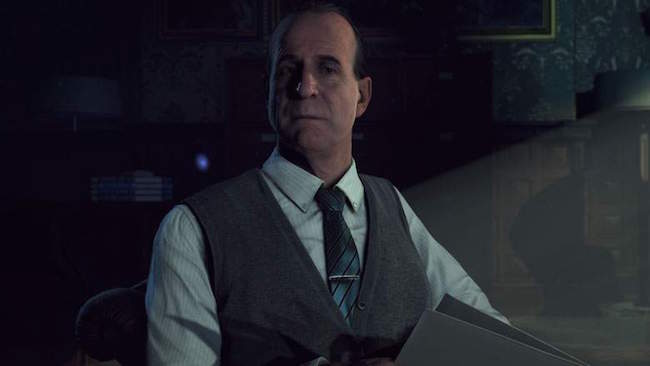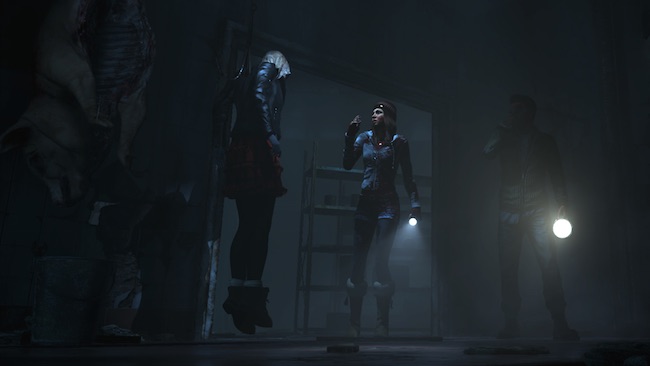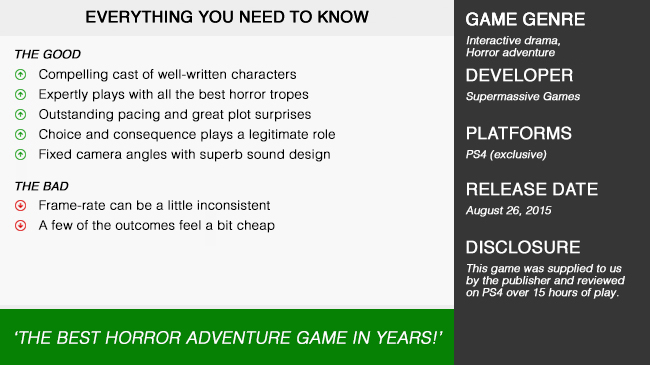
When I first learned about Until Dawn, it was a first-person teen horror exclusive to the PlayStation Move. Basically, the perfect recipe for a gimmicky commercial disaster if there ever was one, but that wasn’t going to deter me. You see, I have a near-unapologetic love for all horror: it’s the one and only genre I derive joy from even if the game or film itself is mediocre. Sadly, however, the title was a no-show for several years and didn’t reappear until gamescom last year as an almost entirely different game. I was hesitant at first, but the gameplay footage they showed reminded me of Heavy Rain with B-horror elements, and that instantly sold it for me. Going in, I fully expected to be playing a quirky horror parody akin to Cabin in the Woods. I never once anticipated that it would be a legitimately groundbreaking experience.

Until Dawn is far from the cliché I thought it was going to be. That’s not to say it doesn’t play with all the conventional tropes common with the genre, it just does so in a way that’s self-aware and expertly written. After the disappearance of twin sisters Beth and Hannah at the Blackwood Mountain Ski Lodge twelve month earlier, eight teen friends have returned to spend a night together in the hopes of finding some sort of closure. Unknown to them, however, there is a psycho on the loose, so what was intended to be a time of healing quickly turns into a struggle for survival. It sounds like the ideal setup for a cheesy ’80s slasher, but the writers quickly hang those preconceptions out to dry. Similar to Silent Hill: Shattered Memories, the narrative unfolds with a mysterious character being interviewed by a psychologist.
On the surface, each character will fill the role of a stereotype: the nerd, the jock, the bitch and so on. What surprised me, however, is how the writers used this trope as a way to immediately begin breaking expectations. Being a game, Until Dawn has more time to breathe than a horror flick could ever dream of. The opening chapters allow you to spend quality time with each character; genuine moments filled with teen melodrama, humour and a few good jump scares. By the time things start to go horribly wrong, I had established a solid bond with the cast and this made the adventure so much more terrifying. One important thing you need to know going in is the game auto-saves, so with branching outcomes and the possibility for any character to die, it adds a foreboding layer of dread knowing all choices are final.

If you’ve played a Quantic Dream game before, you’re going to have a decent idea of how this is going to work. The difference, however, is that Supermassive Games are the first to ever make it work properly. It’s not an experience that sits awkwardly between a film and a game. Until Dawn feels like a game through and through, and it has no problem empowering players with a variety of unique and interesting mechanics. I never thought I could find an appreciation for quick time events again, but they work, and it’s because they’re used in moderation and only where it makes sense. Good pacing is the core component which makes all the difference. You’re never bored or feeling restricted because the experience is ever-evolving. It’s 10 hours until dawn, and it’s going to take roughly 10 hours real-time to get there.
From your talks with the psychologist to the tough calls you’ll have to make on the fly, everything has a distinct feeling of being meaningful. Many games offer the illusion of choice, but this is one of the best I’ve encountered that uses legitimate branching paths. Also be aware of everything you do, such as how you answer the shrink; nothing is entirely superfluous and can often influence the game in subtle ways. It was small touches such as this which solidified my investment in the game, not to mention how convenient it was to track the impact of my actions. In the menu, you’ll find a ‘butterfly effect’ chart which tracks all choices and outcomes throughout your playthrough. If you’re someone who enjoys replayability, this is the golden tool which will give you a good idea of where you could’ve gone differently.

To better explain how the game actually plays, expect a healthy split between third-person exploration and cinematic action sequences; both of which work together fluently. I was honestly surprised with the amount of polish the game received and how responsive the controls were. I also appreciated my time was never wasted trying to guess what required special attention. While exploring, clues and special items all shine when spotted with a flashlight, so you are free to take in the environment without obsessing over what’s inside every pot plant. It sounds simplistic, but this leads to my favourite design choice. The game works on fixed camera angles with just enough control to shift your field of view. It’s something I’ve sorely missed in third-person horror, and I applaud Supermassive for making it relevant again.
The fixed camera angles also play a major role in the effectiveness of the horror, but in equal parts with the game’s outstanding sound design. I never expected Until Dawn would look and sound as good as it does. While the game does suffer from frame-rate inconsistencies, the character models, environments and lighting effects are absolutely stunning, and the soundtrack never misses a beat. The game so seamlessly switches between characters, locations, camera angles, exploration and high-octane action scenes, it’s very impressive. I was especially surprised how well the action worked as it incorporated a lot of exhilarating sequences built upon a healthy balance of snap decision making, timed button presses, basic shooting and keeping the controller dead still. It always felt organic to the game.

It’s easy to sit through a horror film criticising the characters for making stupid decisions. I mean, why would they go in that room if the murderer is almost certainly under the bed? Until Dawn is a game that tries to emulate that pressure of critical thinking without breathing room you need to think, and you’ll be surprised by some of the poor choices you’ll make at times – Especially when you kill someone as a result. That’s one of the reasons the horror works so well; whether you’re on the run from the psycho, trapped a SAW-inspired game of death, or simply spooked by a jump scare: it can too often result in death. Variety is another big credit to the game’s success as I can’t count the number of influences it takes from film, books and other games; naturally exploiting every famous style of horror at some point.
This must all sound very brutal, but there is one unique tool the developers offer as a way to assist you throughout the nightmare: fortune totems. Basically, these are Native American relics that you’ll find scattered and hidden throughout the mountain; from which each will provide you with a small vision of a potential future event. This future can be your death, the death of a friend, a warning of danger, guidance on a trial, or a sign of good fortune. For a game in which your decisions are fixed, I not only found this mechanic refreshing but extremely useful in guiding my actions. On many occasions, they saved me from a gruesome death or guided me toward positive outcomes. Like any ‘vision’ of the future, however, they’re not in order or entirely clear, so you’ll often need to study them to understand what’s revealed.

As much as I adore horror games, I sometimes find them very draining; especially the survival kind. This is why I want to put a major emphasis on my praise for the pacing of the game, and how the developers so flawlessly transport players between the perspectives of so many characters. Not just that, but the near-seamless way it shifts between narrative, exploration and action. It’s an experience best defined as a horror adventure as it doesn’t ever get caught in one particular trope or style and constantly shakes expectations. At times it’s a slasher and at other times it embraces the supernatural; it even dabbles in survival horror. While watching the vidocs within the game, I found it fascinating how much testing and psycho-analysis that went into the pacing and scare design. It was all very carefully considered.
With all that being said, it’s important to know what you’re getting into so you can set reasonable expectations. Above all else, Until Dawn is a character drama, and I think a lot of players are going to be surprised by how well written the main cast is as well as the amount of meaningful development there is throughout. The scenario itself is merely a tool to bring out the best and worst in each of the cast; for which you will have direct influence over their personalities as well as their relationships with each other. The horror components definitely know how to mess with the audience, so you can expect a lot of genuine scares and to be running high on adrenaline. What you shouldn’t expect to see is the dread and helplessness common in survival horror. It’s a compelling thrill ride, and a game I think anyone could enjoy.

I’m going to say it outright, Until Dawn is the best horror adventure since Eternal Darkness: Sanity’s Requiem. For the longest time, developers such as Quantic Dream have tried to make this style of game work only to end up getting stuck halfway between a film and a game. With Until Dawn, Supermassive has laid the foundation for how it can be done while producing an enjoyable and highly polished horror experience. It’s an adventure game brought to life by a compelling cast of characters and a narrative that expertly plays with genre tropes to upturn expectations. It’s certainly not original in all its ideas, but it does deliver one of the most meaningful choice systems to date. What once looked to be a disaster has turned out to be one of this year’s biggest surprises. Expect great scares and to have a tonne of fun!











